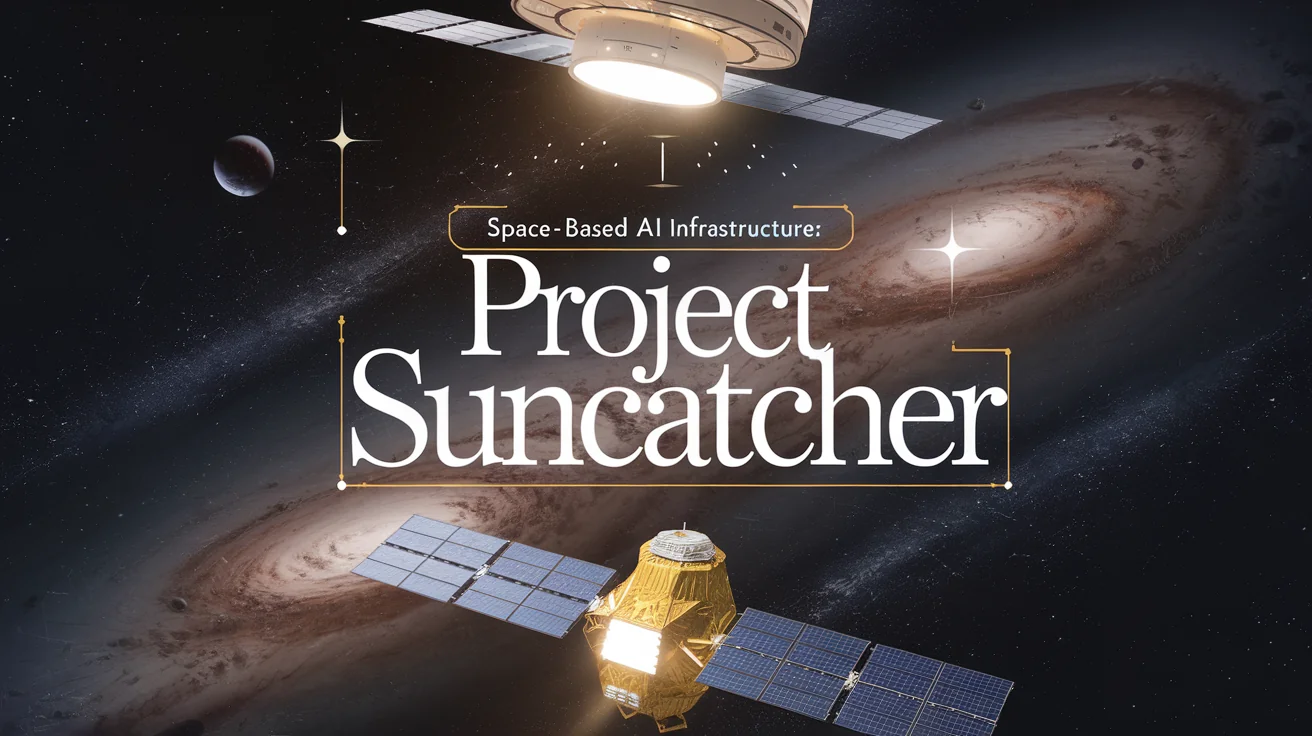Space-Based AI Infrastructure: Project Suncatcher

Artificial intelligence (AI) stands as a pivotal technology promising to reshape our world by unlocking new scientific discoveries and addressing humanity’s most significant challenges. Google’s bold initiative, Project Suncatcher, aims to push the boundaries of AI potential. This project envisions the deployment of solar-powered satellite constellations equipped with Tensor Processing Units (TPUs) linked by free-space optical communication, seeking to capitalize on the Sun’s immense energy and safeguard Earth’s resources.
In the paper titled “Towards a future space-based, highly scalable AI infrastructure system design,” Google’s researchers share their early explorations into overcoming the fundamental challenges associated with building this ambitious project. These challenges involve ensuring high-bandwidth communication between satellites, maintaining optimal orbital dynamics, and protecting computing components from radiation effects.
System Design and Key Challenges
The proposed infrastructure comprises a constellation of interconnected satellites likely orbiting in a sun-synchronous low Earth orbit (LEO) to maximize solar energy exposure. This design not only optimizes energy collection but also reduces reliance on heavy onboard batteries. To establish viability, several technical hurdles must be navigated:
- Achieving Data Center-Scale Inter-Satellite Links: High-performance machine learning tasks necessitate distributing workloads effectively across numerous accelerators, which requires high-bandwidth, low-latency connections. Google researchers believe that employing multi-channel dense wavelength-division multiplexing (DWDM) transceivers can facilitate data rates of tens of terabits per second, achievable through close formation flying of satellites.
- Controlling Satellite Formations: Compact configurations, unlike any existing systems, are critical for maintaining effective inter-satellite links. By developing sophisticated physics models and simulations, researchers analyze how satellites can be controlled within narrow distance parameters to ensure stable orbits and reliable communications.
- Ensuring TPU Radiation Tolerance: To function effectively in space, TPUs must withstand the harsh radiation environment characteristic of LEO. Preliminary tests indicate that Google’s Trillium TPUs exhibit promising radiation hardness, validating their potential for this application.
- Addressing Economic Feasibility and Launch Costs: Historically high launch costs have hindered the development of space-based solutions. However, the projects suggest that prices may drop to below $200/kg by the mid-2030s. Such a reduction could make launching and operating a space-based data center economically viable, compared to traditional options.
Future Directions and Objectives
Initial findings affirm that core concepts of space-based machine learning compute systems are backed by sound principles and feasible under existing technological paradigms. Nevertheless, considerable engineering challenges, such as thermal management and on-orbit reliability, continue to necessitate attention.
Looking ahead, Google plans to undertake a learning mission in tandem with Planet, slated for early 2027, to launch two prototype satellites. This initial test phase will explore models and TPU performance in the space environment, as well as evaluate optical inter-satellite link efficiency for distributed ML tasks.
Ultimately, advancements in satellite technology could lead to innovative designs tailored for the space environment, integrating solar power collection, thermal management, and computation. Such integrations could parallel the growth seen in system-on-chip designs spurred by the evolution of modern smartphones, setting a trajectory for future breakthroughs in space-based AI infrastructure.
The researchers of “Towards a future space-based, highly scalable AI infrastructure system design” include Blaise Agüera y Arcas, Travis Beals, and other notable contributors. Special acknowledgments are made to various team members for their invaluable insights and contributions to feasibility analysis and system design.